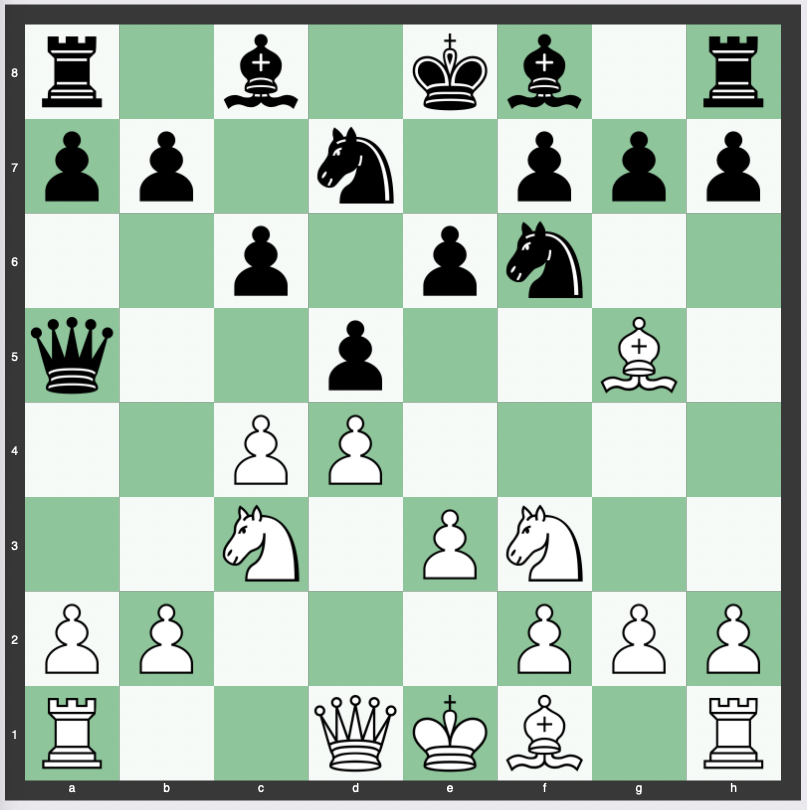The Cambridge Springs Defense, also known as the Pillsbury Variation of the Queen’s Gambit Declined, is a chess opening that has intrigued both amateur and professional players.
We look into the move order, theory, strategy, and various other aspects of this opening, shedding light on its history and effectiveness in different levels of play.
Move Order of the Cambridge Springs Defense
- d4 d5
- c4 e6
- Nc3 Nf6
- Bg5 Nbd7
- Nf3 c6
- e3 Qa5

The above moves set the stage for the Cambridge Springs Defense.
Black aims to break the pin on the h4–d8 diagonal and form a pin of their own on the c3-knight, capitalizing on the absence of White’s queen bishop from the queenside.
Theory, Strategy and Purpose of the Cambridge Springs Defense
The purpose of the Cambridge Springs Defense is to create pressure on White and establish a flexible and aggressive position for Black.
The move 6…Qa5 breaks the pin on the knight and puts pressure on the c3-knight.
If Black later plays dxc4, there may be threats against the g5-bishop.
This opening also guards against the Elephant Trap, with 5.cxd5 failing to win a pawn.
Variations of the Cambridge Springs Defense
There are several variations in the Cambridge Springs Defense, notably:
- 7.Nd2 (the main line): This breaks the pin on the c3 knight and defends e4; 7…Bb4 can be answered by 8.Qc2.
- 7.cxd5: This avoids complications by clarifying the central situation. Black’s strongest recapture is 7…Nxd5.
- 7.Bxf6: This move avoids tactics involving discovered attacks on the g5-bishop.
History of the Cambridge Springs Defense
The Cambridge Springs Defense has a rich history.
Its first recorded use was by Emanuel Lasker in 1892.
The name derives from a 1904 tournament in Cambridge Springs, Pennsylvania, and its practitioners have included grandmasters such as Efim Bogoljubov, Vasily Smyslov, Garry Kasparov, and Magnus Carlsen.
Is the Cambridge Springs Defense Good for Beginners or Intermediates?
The Cambridge Springs Defense remains popular among amateurs due to several traps that White must avoid.
It offers an appealing blend of strategy and tactics that can be appealing to both beginners and intermediate players.
How Often Is the Cambridge Springs Defense Played at the Grandmaster Level?
At the Grandmaster level, the Cambridge Springs Defense has been embraced by some top players.
While not as prevalent as some other openings, it has been successfully employed by legendary players such as Kasparov and Carlsen.
Its tactical richness and strategic depth continue to make it an interesting choice at the highest level of competition.
Punishing Amateur Mistakes | Cambridge Springs Opening
Conclusion
The Cambridge Springs Defense is a complex and intriguing chess opening that offers rich possibilities for both sides.
From its historical roots to its modern-day applications, it continues to be a fascinating study for players at all levels.
Whether you are a beginner looking to learn a new opening or an advanced player seeking to deepen your understanding, the Cambridge Springs Defense offers a world of strategic and tactical opportunities waiting to be explored.


